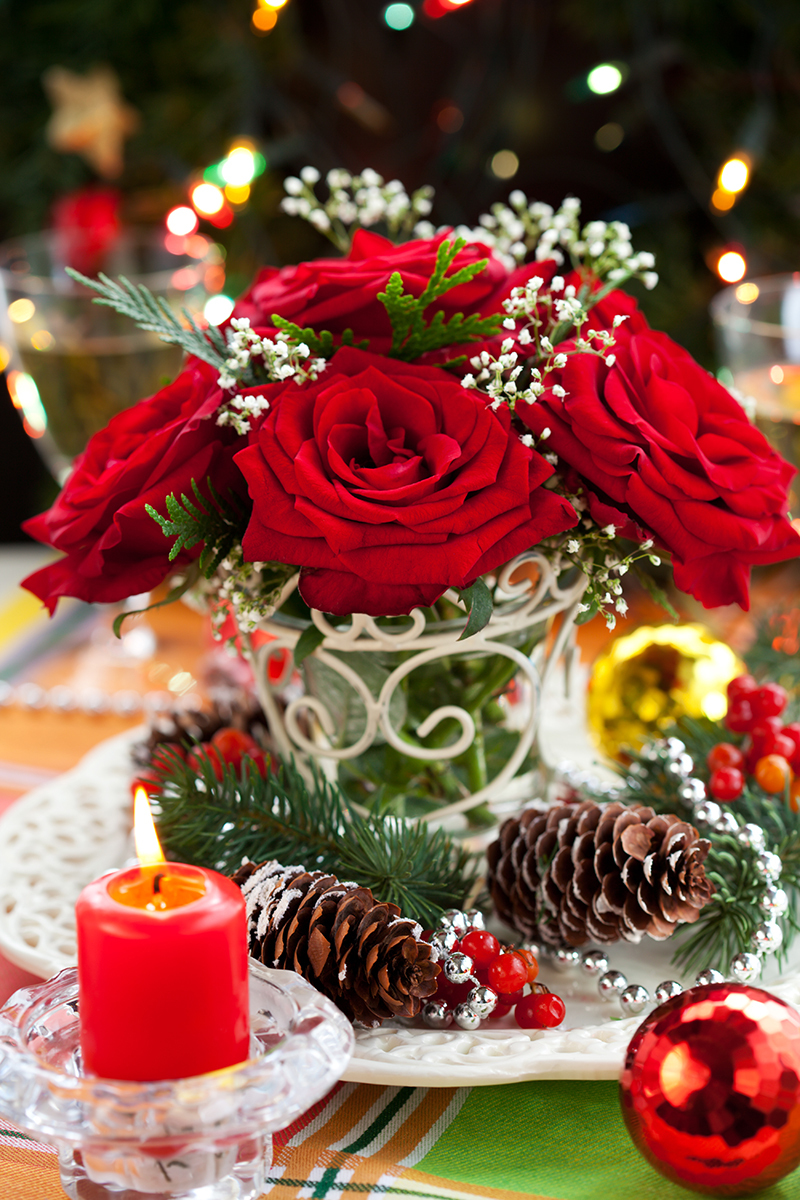Mastering the Art of Hydrangea Care
Posted on 27/06/2025
Mastering the Art of Hydrangea Care: Your Ultimate Guide
Hydrangeas are among the most spectacular and rewarding flowering shrubs, celebrated for their lush blossoms and captivating hues. If you've always admired these beauties, you might be eager to learn the secrets of perfect hydrangea care. In this comprehensive guide, you'll uncover the best tips, techniques, and expert advice for growing healthy, thriving hydrangeas in your garden. Whether you're a gardening novice or a seasoned pro, mastering the art of hydrangea care will help your landscape burst with vibrant blooms season after season.
Understanding Hydrangeas: A Brief Introduction
*Hydrangeas* belong to the genus Hydrangea, boasting over 70 different species. Native to Asia and the Americas, these perennial shrubs have captured the attention of gardeners worldwide. With their elegant flower heads--ranging from mophead and lacecap to panicle and oakleaf--hydrangeas offer extraordinary color and texture for your garden.
Key Hydrangea Varieties:
- Mophead Hydrangea (Hydrangea macrophylla): Recognized for large, rounded blooms.
- Lacecap Hydrangea: Delicate flat flower heads with showy outer petals.
- Panicle Hydrangea (Hydrangea paniculata): Cone-shaped blooms, usually white or pink.
- Oakleaf Hydrangea (Hydrangea quercifolia): Unique foliage resembling oak leaves.
- Climbing Hydrangea (Hydrangea anomala): Vigorous vines with lacy white flowers.

Choosing the Right Hydrangea for Your Garden
Before you can master hydrangea care, it's crucial to pick the right type for your garden conditions. Consider the following factors:
- Sunlight: Most hydrangeas prefer partial shade, though panicle varieties tolerate more sun.
- Soil type: Hydrangeas thrive in rich, well-drained soils.
- Space: Some hydrangeas can grow quite large; plan accordingly.
- Climate: Certain species fare better in different USDA zones.
Match your desired hydrangea variety with your garden's specific conditions for best results. This simple approach forms the foundation of successful hydrangea gardening.
Planting Hydrangeas the Right Way
When to Plant Hydrangeas
The best time to plant hydrangeas is in early spring or fall--when temperatures are mild and rainfall is plentiful. Avoid planting during the hottest summer months or when the ground is frozen.
How to Plant Hydrangeas
- Site Selection: Choose an area with morning sun and afternoon shade.
- Soil Preparation: Work compost or organic matter into your soil to increase fertility.
- Planting Depth: Dig a hole twice as wide as the root ball and just as deep; gently tease the roots and set hydrangea in the hole.
- Spacing: Allow at least 3-10 feet between plants, depending on variety.
- Watering: Water thoroughly after planting to settle the soil.
Proper planting is essential for healthy hydrangea growth. By providing the right foundation, your hydrangeas will establish strong root systems and produce more magnificent blossoms for years to come.
Hydrangea Care Guide: Nurturing for Lush Growth
Once planted, hydrangeas require routine care to flourish. Let's dive into the essential elements of hydrangea maintenance:
Watering Hydrangeas
- Frequency: Hydrangeas enjoy moist soil but hate being waterlogged. Water deeply once or twice per week, adjusting frequency based on rainfall and temperature.
- Mulching: Apply a 2-3 inch layer of mulch to retain moisture, suppress weeds, and keep roots cool.
Tip: Morning watering is best for hydrangeas, allowing leaves to dry and lowering risk of disease.
Fertilizing Hydrangeas
- When: Fertilize in early spring as new growth emerges, and again in mid-summer if needed.
- What to Use: Choose a balanced, slow-release fertilizer formulated for flowering shrubs.
- Don't over-fertilize; excess nutrients can lead to fewer flowers and lush foliage instead of blooms.
Pruning Techniques to Enhance Blooms
- Know Your Variety: Some hydrangeas bloom on new wood, others on old wood. Prune accordingly.
- Mophead and Lacecap: Prune lightly after flowering, removing spent flowers and weak stems.
- Panicle and Smooth Hydrangeas: Cut back in late winter or early spring for vigorous new growth.
- Oakleaf Hydrangeas: Minimal pruning is necessary; just remove damaged stems.
Improper pruning is a common cause of lackluster blooms, so be sure to research your specific hydrangea type.
Adjusting Hydrangea Flower Color: Garden Magic
One of the unique joys of growing hydrangeas is their ability to shift flower color in response to soil pH. With some hydrangea varieties (notably mophead and lacecap types), you can magically transform pink blossoms into shades of blue or vice versa!
- To produce blue flowers: Acidic soil (pH below 6) is key. Incorporate aluminum sulfate or sulfur to lower pH.
- For pink flowers: Alkaline soil (pH above 7) works best. Add lime to raise soil pH.
- Check your soil pH regularly and adjust amendments slowly to avoid shocking your plants.
*Note: Panicle and oakleaf hydrangea colors are not affected by soil pH.*
Hydrangea Troubleshooting: Pest and Disease Management
Even with top-notch hydrangea care, problems can arise. Here's how to identify and combat common hydrangea issues:
Common Pests
- Spider Mites: Watch for stippled leaves and fine webbing. Hose off plants with water and use insecticidal soap if needed.
- Aphids: These sap-sucking insects cluster on new growth. Remove with a strong water spray or natural predators like ladybugs.
- Slugs and Snails: Leave behind ragged holes. Handpick at dusk or use eco-friendly slug baits.
Disease Prevention
- Powdery Mildew: Appears as a powdery coating on leaves. Improve air circulation and water at soil level.
- Leaf Spot: Brown or yellow spots indicate fungal problems. Remove affected leaves and avoid overhead watering.
- Root Rot: Usually caused by poor drainage. Ensure soil is well-drained and avoid excessive watering.
Regular monitoring, prompt removal of damaged plant parts, and proper care are your best defenses against pests and diseases.
Seasonal Hydrangea Care: Month-by-Month Tips
- Spring: Fertilize, prune appropriately, and mulch.
- Summer: Water consistently, monitor for pests, and deadhead spent blooms.
- Autumn: Reduce watering, apply compost, and prepare plants for winter.
- Winter: Protect hydrangeas with a layer of mulch or burlap in colder zones; avoid heavy pruning.
Adapt your routine to seasonal needs for year-round, healthy hydrangeas.
Propagating Hydrangeas: Grow More from What You Have
If you wish to expand your collection or share the joy with friends, hydrangea propagation is easy and rewarding. Here's how:
Propagating from Cuttings
- In late spring or early summer, take a 4-6 inch cutting from a non-flowering stem.
- Remove the lower leaves and dip the cut end in rooting hormone.
- Plant in a pot filled with moist, sterile potting mix.
- Cover with a plastic bag to retain humidity and place in indirect light.
- Roots should form in 2-4 weeks. Transplant once established.
Dividing mature plants or layering branches are also excellent ways to propagate hydrangeas. With patience and care, your garden can overflow with these enchanting blooms!
Overwintering Hydrangeas: Preparing for Cold Weather
In colder climates, special care is vital for winter protection:
- Add extra mulch around the plant base after the first frost to insulate roots.
- Wrap shrubs with burlap to shield from harsh winds and rapid temperature shifts.
- Container-grown hydrangeas should be moved to sheltered locations or garages.
Proper overwintering ensures your hydrangeas rebound with vigor come springtime.

Frequently Asked Hydrangea Questions
Why are my hydrangea leaves wilting?
This usually signals underwatering or overexposure to intense sunlight. Ensure consistent moisture and shift the plant to a shadier spot if possible.
How long do hydrangeas bloom?
With the right care, most hydrangeas bloom from late spring into fall--providing lasting beauty for nearly half the year.
Can I grow hydrangeas in containers?
Absolutely! Select a large pot with drainage holes, use quality potting soil, and water frequently. Dwarf and compact hydrangea varieties are best suited for container gardens.
Are hydrangeas deer-resistant?
Unfortunately, most hydrangeas are not deer-resistant. Protect your shrubs with fencing or deer repellents if browsing is a concern in your area.
Conclusion: Enjoying Hydrangeas at Their Best
By following the expert strategies laid out in this hydrangea care guide, you'll be well on your way to cultivating vigorous, spectacular hydrangea plants. Remember, the keys to *mastering hydrangea gardening* are location, soil, watering, pruning, and seasonal attention. Regularly monitoring for pests and diseases, adjusting your approach to flower color, and experimenting with propagation will elevate your gardening prowess.
Embrace the journey! With patience and care, your hydrangeas will become the envy of the neighborhood--delighting you with a show of unforgettable blooms, year after year. Let your garden flourish as you truly master the art of hydrangea care.
Latest Posts
Thriving Greenery: Top Low Maintenance Plants for Your Office Space
Unveil Your Inner Bloom: Which Flower Represents You?
Extend the Beauty of Your Poinsettias with These Tips







